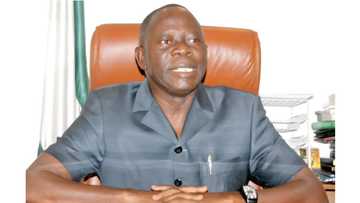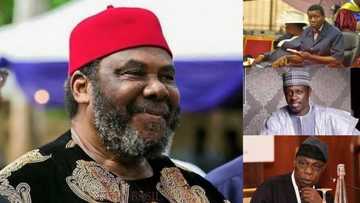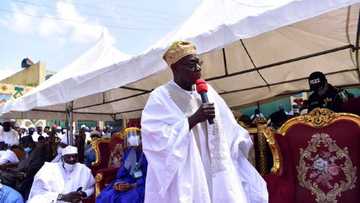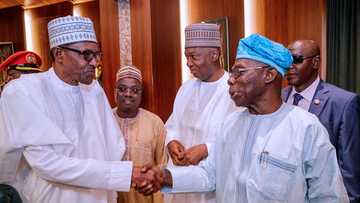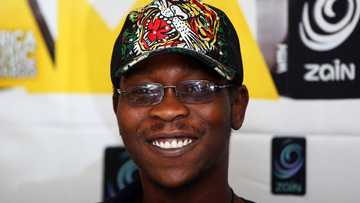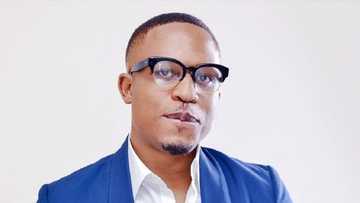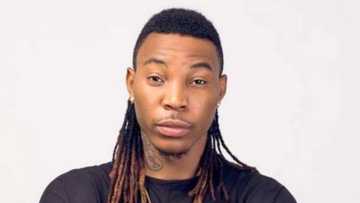Olusegun Obasanjo biography: age, education, net worth, children
Olusegun Obasanjo is one of the most celebrated politicians in Africa and the world. His significant contribution to humanitarian activities has made him a household name. But how much do you know about him?
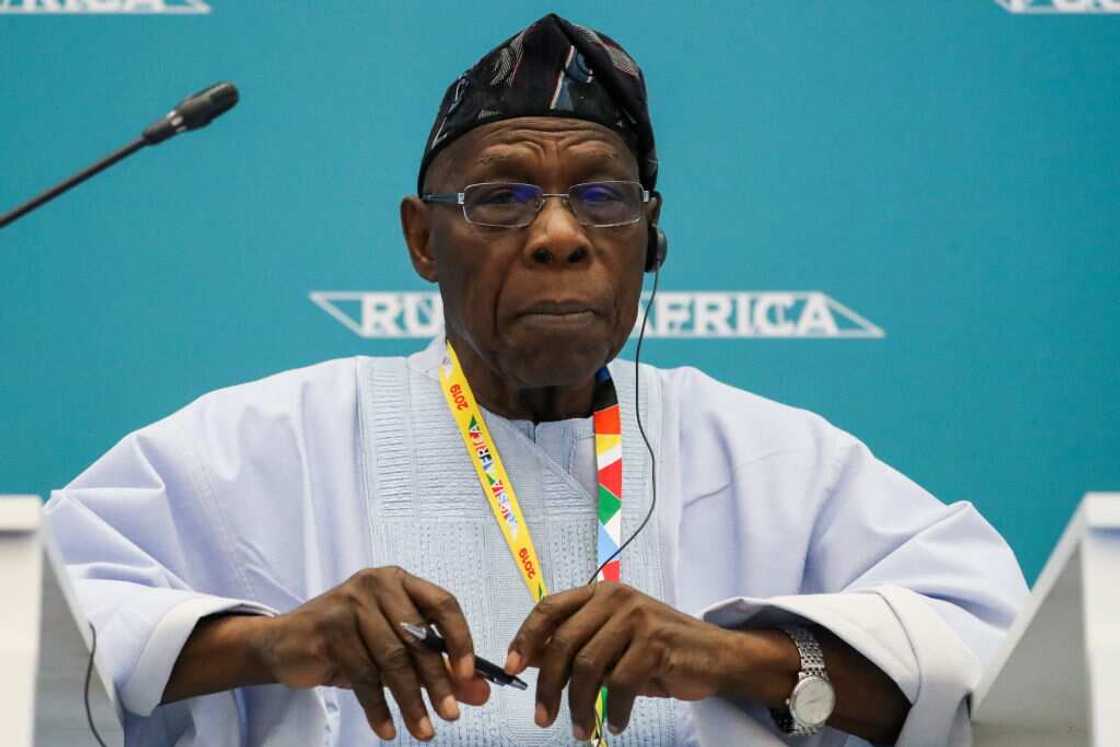
Source: Getty Images
Olusegun's achievement in the military and politics are admirable. He a voice to reckon with among leaders worldwide. Here is his biography to provide an in-depth look at his education, career, and family.
Profile summary
- Full name: Olusegun Mathew Okikiola Aremu Obasanjo
- Date of birth: March 5th, 1937
- Zodiac sign: Pisces
- Place of birth: Abeokuta, Nigeria
- Nationality: Nigerian
- Ethnicity: Black
- Gender: Male
- Profession: Politician (Former Nigerian President)
- Political party: Peoples Democratic Party
Olusegun Obasanjo biography
He was born on March 5th, 1937, to the Owu branch of the Yoruba people. His father was called Amos Adigun Obaluayesanjo Bankole, while his mother's name is Bernice Ashabi Bankole.
He was the firstborn in a family of nine. Unfortunately, only he and his sister - Adunni Oluwole, survived childhood. The pair was raised in humble family background. Their father was a farmer, and therefore, they were extensively involved in Agricultural activities when their early years.
How old is Obasanjo Olusegun?
The former President in 1937 and celebrates his birth anniversary on May 5th each year. As of 2021, Obasanjo age is 84 years.
Educational background
Obasanjo began schooling at the age of eleven years. With the encouragement of his father, he joined a local village primary school. In 1951, Olusegun moved on to the Baptist Day School in the Owu quarter of Abeokuta. He then joined Baptist Boys' High School for his secondary school studies.
Where is Olusegun Obasanjo from?
The native town of the former President is Abeokuta. It is the capital of Ogun State. His parents gave him the name Olusegun because it meant "The Lord is victorious".
Olusegun lost his parents very early. He lost his mother in 1958, and then his father passed away in 1959.
Professional career
Apart from being Nigeria's President, he was also a renowned military person. Here is an insight into his professional careers in the military and politics.
Military career
The former President became an orphan at the age of 22. However, his parents' passing did not prevent him from pursuing his military career and joining the Nigerian army in 1958. He received military education and training in England and India.
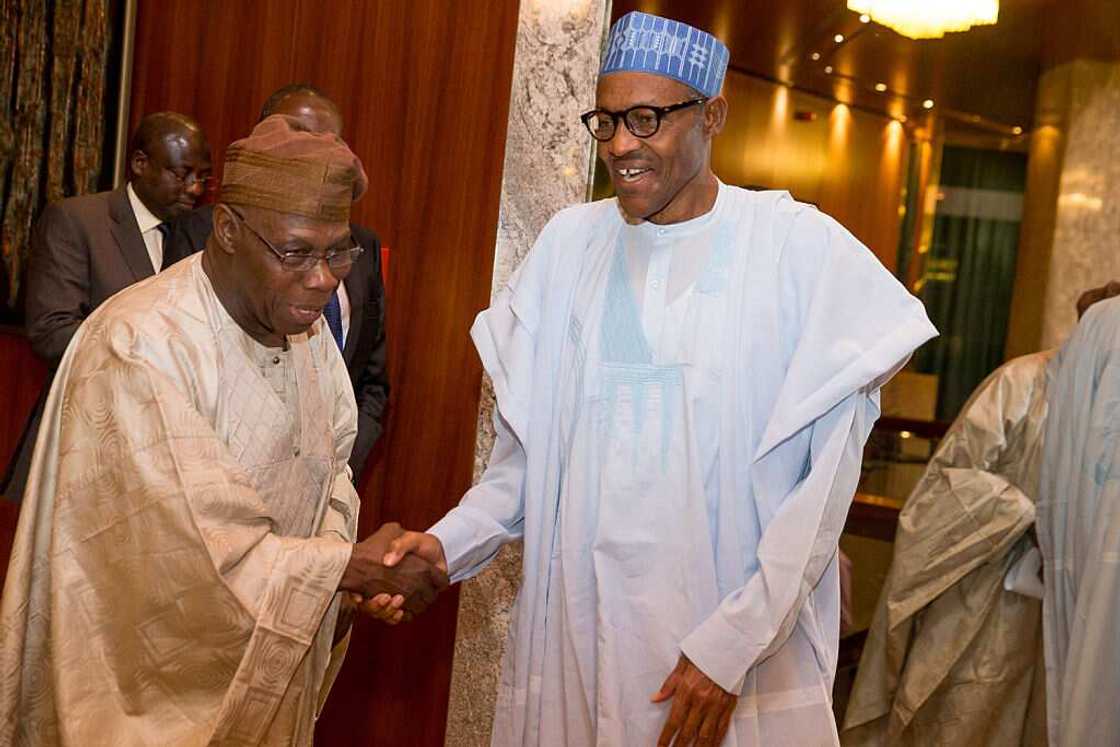
Source: Getty Images
After completing all the necessary training, he was commissioned to become a Nigerian army officer. During his time as a soldier, he served in Kaduna between 1958 and 1959. In 1959, he rose to the Second Lieutenant position, and in 1960, he gained the title of lieutenant.
As a lieutenant, he served in the peacekeeping forces in Congo - formerly Zaire. Afterwards, he joined the engineering unit, which was the only one in the Nigerian army at the time, and proceeded to become the unit commander.
In 1963, Olusegun got a promotion as a captain. He was sent to India, where he worked at the Indian Army Engineering School in Kirkee. He later got another promotion - this time to the position of a Major.
His rise and rise of ranks in the military
Olusegun's dedication to service did not go unnoticed. In 1965, he came to the Defence Services Staff College, which is in Wellington, India.
Later, in the 40th-anniversary book of this educational institution, the retired Colonel R.D. Palsokar mentioned him. He described the former President as the best Nigerian officer sent to Wellington and said that he was very popular in every circle.
In 1967, Obasanjo once again moved up the career ladder, obtaining the position of lieutenant colonel. He was appointed to the Second Area command and served in Ibadan for two years from 1967 to 1969. 1969 was the year he got his colonel position and got assigned to a few different divisions, where he served throughout the year.
In 1970, he accepted the surrender of the Biafran army, which ended the civil war. In January 1975, he was assigned to be the Federal Commissioner of works and housing by then head of state - General Yakubu Gowon. In July that year, he was appointed to be the Chief of Staff in General Murtala Mohammed's supreme headquarters. He then became lieutenant-general in 1976.
Failed assignation attempt
On February 13th, 1976, he was marked for assassination together with some other officials, including the head of state, General Murtala. Because of the security policy that Murtala had accepted, the plotters managed to get easy access to the targets.
During the attempted coup led by Colonel Dimka, General Murtala was murdered. Luckily, Obasanjo and Theophilus Danjuma (the chief of army staff) managed to escape death. The plotters took over the radio station and announced their coup attempt. However, Olusegun and Danjuma established the command hierarchy and managed to gain control of security in Lagos.
Career in politics
Following the death of Murtala, General Olusegun Obasanjo was made the Head of State. He continued the program of restoring the civil government and improvement of public service. He was the Head of State for three years - 1976 to 1979.
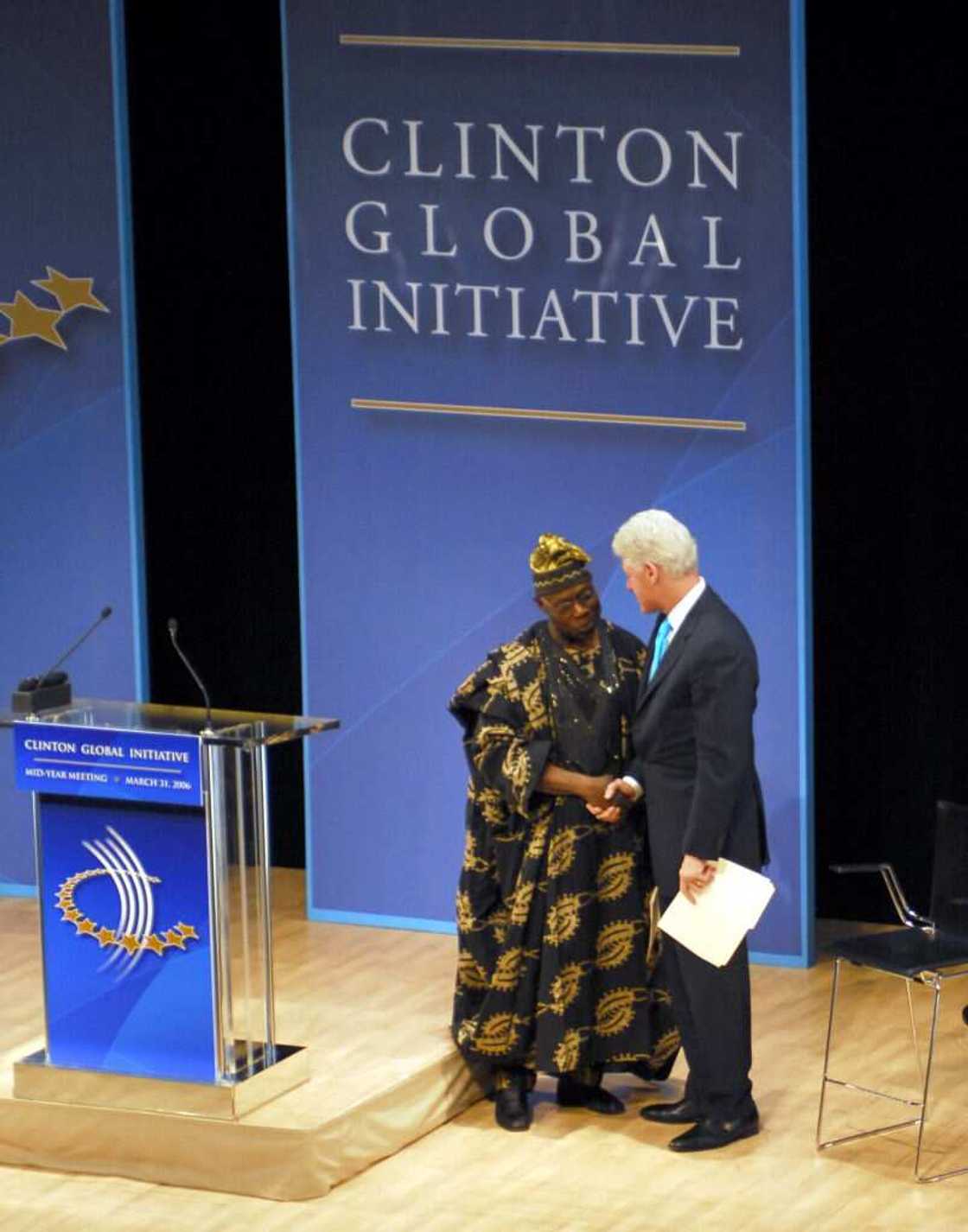
Source: Getty Images
When his time ran out, he handed over power to the civilian democratically-elected President Shehu Shagari. This made him the first head of a military state, which peacefully transferred his power to the civilian government regime.
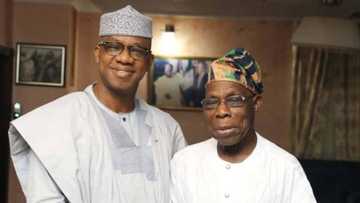
Read also
Living legend: Ogun governor showers praise on Obasanjo as former president celebrates 84th birthday
During his years as a Head of State, Obasanjo managed to increase oil revenues. He strongly invested in the infrastructure. He also expanded the educational sphere as the number of universities significantly increased. However, he was accused of political repressions, especially against the opposing activist Fela Kuti.
In 1995, during dictator Sani Abacha's regime, Olusegun Obasanjo was imprisoned after speaking about human rights abuse. The accusations of participation in the alleged coup were fabricated against him, based on the testimony he gave through torture.
At first, he was sentenced to death, but then his sentence was reduced to thirty years in prison. During his three years in jail, Olusegun became born again Christian. In 1998, when Sani Abacha suddenly died, Obasanjo was released from jail. He described his trial experience as the saddest day of his life.
A year after his release, Obasanjo won the presidential elections, garnering 62.6% of the overall vote. He was sworn in as the President of Nigeria on May 29th, 1999. He became the first democratically elected President after sixteen years of Nigerian military rule.
His first term as President
He focussed on establishing strong diplomatic relationships between Nigeria and Western countries. Obasanjo mostly travelled abroad in an attempt to win some support. He also went on peacekeeping missions to Liberia and Sierra-Leone, which he got international praise for.
The United States and Britain were happy to have an alliance with the African country whose government is critical of Zimbabwe's abusive situation under Robert Mugabe. In contrast, other countries in Africa had a softer position towards it. Even though some officials had conflicts with Obasanjo and attempted to impeach him, he survived it.
Olusegun second-term as President
In 2003, Obasanjo won the election against his main opponent General Muhammadu Buhari, a former military ruler. Obasanjo won by 61.8% of the public vote. His second term attracted more criticism, mainly for his decision to give political asylum to Charles Taylor.
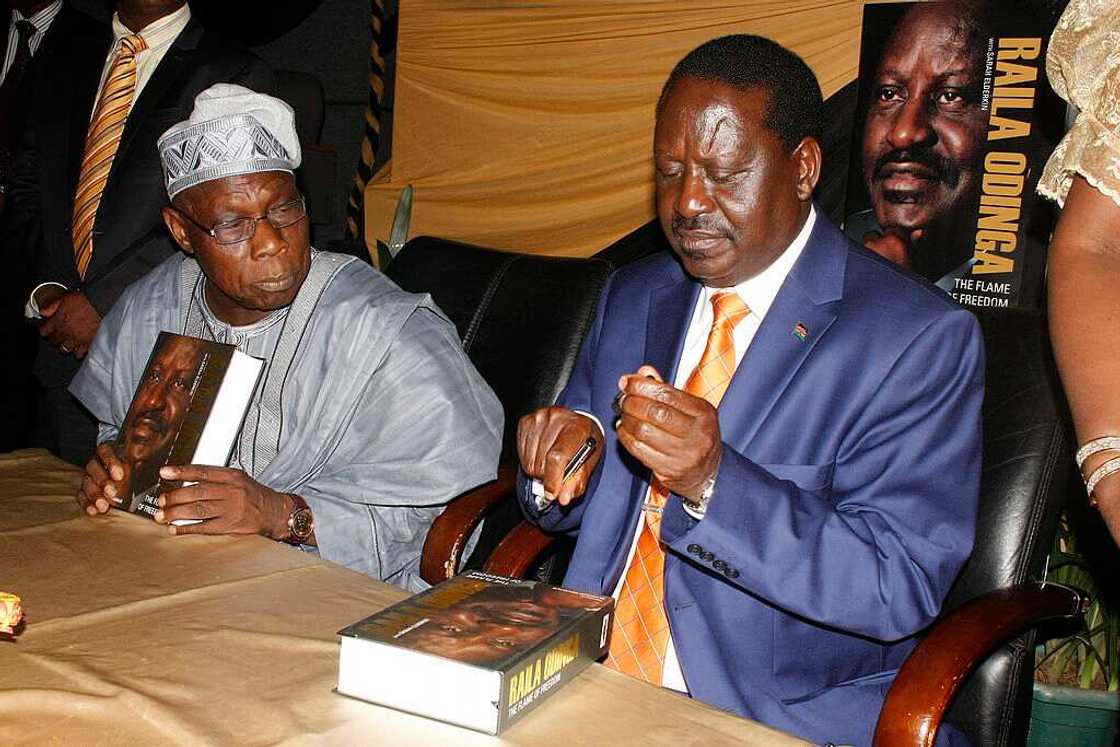
Source: Getty Images
There was also a dispute about the Greentree Agreement, which was about withdrawing Nigerian troops from the Bakassi Peninsula. He was also accused of plans to change the constitution to serve three terms as President. It is widely known as the Third Term Agenda.
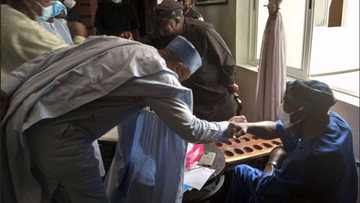
Read also
Breaking: Obasanjo, Saraki, other PDP chieftains in closed-door meeting as race for 2023 elections gets intense
Life after his presidency
For a while, Obasanjo continued to take part in the countries politics. For instance, he became the chairman of the Board of Trustees organized by PDP. His responsibilities were nominating people for governmental positions and controlling the strategy. However, later he resigned from this board and withdrew from political activities.
Aside from being a Chief and holding a lot of different titles related to the chieftaincy, Chief Olusegun Obasanjo is also the Balogun of Owu and the Ekerin Balogun in the Egba clan of Yorubaland.
In December 2017, the former President defended his PhD thesis at the NOUN (National Open University of Nigeria). He is a holder of a PhD degree in Theology. Two years before, he managed to complete his master's degree in this course.
Olusegun Obasanjo as an author
As a man of vast experience, the former President has shared his thoughts on various aspects of humanity. He has written some of the most selling books. Here are some of the book written by him.
- Not my Will, 1990
- My Command, 1980
- Management in Agriculture and Rural Development, 1983
- Nzeogwu, 1987
- Africa in Perspective, 1987
- Forging a Compact in U.S. African Relations: The Fifth David M. Abshire Endowed Lecture, 1987
- Africa Embattled, 1988
- Constitution for National Integration and Development, 1989
- Hope for Africa, 1993
- The Animal Called Man, 1998
- Guides to Effective Prayer, 1998
- Sermons from Prison, 2000
- A New Dawn, 2001
- Africa Through the Eyes of a Patriot, 2001
- I see Hope, 2002
- Standing Tall, 2005
- Years of Reconstruction, 2007
- My Watch, 2014
- My Watch Volume 1: Early Life and Military, 2015
- My Watch Volume 2: Political and Public Affairs, 2015
- My Watch Volume 3: Now and Then, 2015
- Making Africa Work: A Handbook, 2017
- Democracy Works: Re-Wiring Politics to Africa’s Advantage, 2019
What is Olusegun Obasanjo net worth?
As one who has had lucrative careers in the military and politics, he must be worth an incredible amount of money. His net worth is a staggering $1.6 billion.
Who is Obasanjo wife?
The former President was married four times, and two of his wives tragically passed away. His first wife was the late Esther Oluremi. He got married for the second time to Lynda. However, in 1987, Olusegun Obasanjo’s wife was ordered out of the car by armed men and fatally shot when she refused to move quickly.
The third marriage of the former President was to Stella Abebe, who in 1999 became the First Lady of Nigeria. Unfortunately, in October 2005, Stella unexpectedly passed on after a failed tummy tuck surgery in Spain.
How many children does Olusegun Obasanjo have?
The former President of Nigeria is the father of many children. He has twenty children in general, and nineteen of them are biological. He adopted his nephew Kunle at an early age and has considered him as his son. Some of Obasanjo’s children have become prominent in their fields.
For example, his eldest daughter Dr Iyabo Obasanjo-Bello is also a politician and was once a Senator of Ogun State. His son Adeboye Obasanjo followed his footsteps and is currently a Lieutenant Colonel in Jos, Plateau State, at the Third Division.
Regardless of what anyone thinks about Olusegun Obasanjo, he is a genuinely remarkable politician in Nigeria. Not everyone agreed with his views and actions, but he managed to make a name for himself in the military and politics, and his influence will be remembered for a long time.
READ ALSO: Alexis Rodman biography: what is known about Dennis Rodman’s daughter?
Legit.ng recently published an article on the biography of Alexis Rodman. Alexis is a famous American daughter of the former professional basketball player - Dennis Rodman.
Alexis has kept her life private and away from the public eye. You will get an insight into who she is from her biography here.
Source: Legit.ng


